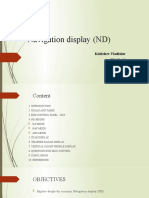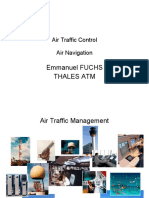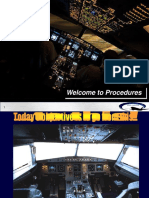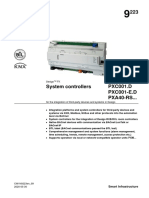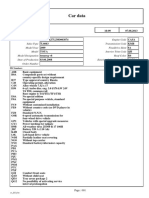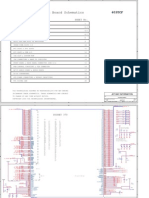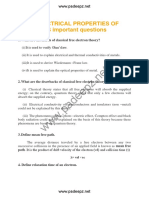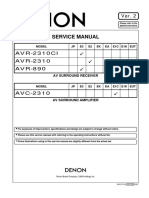A flight management system (FMS) is a fundamental component of a modern
airliner's avionics. An FMS is a specialized computer system that automates a wide variety of in-
flight tasks, reducing the workload on the flight crew to the point that modern civilian aircraft no
longer carry flight engineers or navigators. A primary function is in-flight management of the
flight plan. Using various sensors (such as GPS and INS often backed up by radio navigation) to
determine the aircraft's position, the FMS can guide the aircraft along the flight plan. From the
cockpit, the FMS is normally controlled through a Control Display Unit (CDU) which
incorporates a small screen and keyboard or touchscreen. The FMS sends the flight plan for
display to the Electronic Flight Instrument System (EFIS), Navigation Display (ND), or
Multifunction Display (MFD). The FMS can be summarised as being a dual system consisting of
the Flight Management Computer (FMC), CDU and a cross talk bus.
The modern FMS was introduced on the Boeing 767, though earlier navigation computers did
exist.[1] Now, systems similar to FMS exist on aircraft as small as the Cessna 182. In its
evolution an FMS has had many different sizes, capabilities and controls. However certain
characteristics are common to all FMS.
Navigation databaseEdit
All FMSs contain a navigation database. The navigation database contains the elements from
which the flight plan is constructed. These are defined via the ARINC 424 standard. The
navigation database (NDB) is normally updated every 28 days, in order to ensure that its contents
are current. Each FMS contains only a subset of the ARINC / AIRAC data, relevant to the
capabilities of the FMS.
The NDB contains all of the information required for building a flight plan, consisting of:
Waypoints/Intersection
Airways
Radio navigation aids including distance measuring equipment (DME), VHF omnidirectional
range (VOR), non-directional beacons (NDBs) and instrument landing systems (ILSs).
Airports
Runways
Standard instrument departure (SID)
Standard terminal arrival (STAR)
Holding patterns (only as part of IAPs-although can be entered by command of ATC or at pilot's
discretion)
Instrument approach procedure (IAP)
Waypoints can also be defined by the pilot(s) along the route or by reference to other waypoints
with entry of a place in the form of a waypoint (e.g. a VOR, NDB, ILS, airport or
waypoint/intersection)
Flight planEdit
The flight plan is generally determined on the ground, before departure either by the pilot for
smaller aircraft or a professional dispatcher for airliners. It is entered into the FMS either by
typing it in, selecting it from a saved library of common routes (Company Routes) or via
an ACARS datalink with the airline dispatch center.
� During preflight, other information relevant to managing the flight plan is entered. This can
include performance information such as gross weight, fuel weight and center of gravity. It will
include altitudes including the initial cruise altitude. For aircraft that do not have a GPS, the
initial position is also required.
The pilot uses the FMS to modify the flight plan in flight for a variety of reasons. Significant
engineering design minimizes the keystrokes in order to minimize pilot workload in flight and
eliminate any confusing information (Hazardously Misleading Information). The FMS also sends
the flight plan information for display on the Navigation Display (ND) of the flight deck
instruments Electronic Flight Instrument System (EFIS). The flight plan generally appears as a
magenta line, with other airports, radio aids and waypoints displayed.
Special flight plans, often for tactical requirements including search patterns, rendezvous, in-
flight refueling tanker orbits, calculated air release points (CARP) for accurate parachute jumps
are just a few of the special flight plans some FMS can calculate.
Position determinationEdit
Once in flight, a principal task of the FMS is to determine the aircraft's position and the accuracy
of that position. Simple FMS use a single sensor, generally GPS in order to determine position.
But modern FMS use as many sensors as they can, such as VORs, in order to determine and
validate their exact position. Some FMS use a Kalman filter to integrate the positions from the
various sensors into a single position. Common sensors include:
Airline-quality GPS receivers act as the primary sensor as they have the highest accuracy and integrity.
Radio aids designed for aircraft navigation act as the second highest quality sensors. These include;
o Scanning DME (distance measuring equipment) that check the distances from five different DME
stations simultaneously in order to determine one position every 10 seconds.[2]
o VORs (VHF omnidirectional radio range) that supply a bearing. With two VOR stations the aircraft
position can be determined, but the accuracy is limited.
Inertial reference systems (IRS) use ring laser gyros and accelerometers in order to calculate the aircraft
position. They are highly accurate and independent of outside sources. Airliners use the weighted average
of three independent IRS to determine the “triple mixed IRS” position.
The FMS constantly crosschecks the various sensors and determines a single aircraft position
and accuracy. The accuracy is described as the Actual Navigation Performance (ANP) a circle
that the aircraft can be anywhere within measured as the diameter in nautical miles. Modern
airspace has a set required navigation performance (RNP). The aircraft must have its ANP less
than its RNP in order to operate in certain high-level airspace.
GuidanceEdit
Given the flight plan and the aircraft's position, the FMS calculates the course to follow. The
pilot can follow this course manually (much like following a VOR radial), or the autopilot can be
set to follow the course.
The FMS mode is normally called LNAV or Lateral Navigation for the lateral flight plan and
VNAV or vertical navigation for the vertical flight plan. VNAV provides speed and pitch or
altitude targets and LNAV provides roll steering command to the autopilot.




























